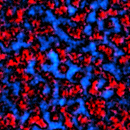
Remorins have frequently been shown to be activated during plant-microbe interactions (reviewed in Jarsch and Ott, 2011). However, most of these genes are ubiquitiously expressed in plants suggesting that they may serve housekeeping functions. To approach their roles within plant cells we are generating homozygous k.o. mutants against most of the 16 remorins from Arabidopsis thaliana. These mutants are currently under detailled phenotypical investigation and first double mutants have been created. Furthermore all remorins from A. thaliana have been cloned in our lab and expressed as fluorophore-tagged fusion proteins to study their subcellular localisation. We showed that these proteins label a wide range of different, co-existing nanodomains (Jarsch et al., 2014). We have currently placed our main focus on the analysis of remorins during plant-microbe interactions (Bücherl et al., 2017) but recent findings also direct us to investigate aspects of plant developmental biology in more detail. Published data suggesting involvement of remorins in phytohormone-mediated pathways seem possible since transcript levels of AtDbp (AtREM1.3) are elevated upon treatment with auxin (Alliotte et al., 1989). Data obtained from co-immunoprecipitation experiments of AtREM1.3 also support this hypothesis since this remorin appears to interact with the response regulator ARR4 (Yamada et al., 1998) that is involved in cytokinin-dependent pathways. Interestingly, several members of the remorin family were found to be differentially regulated during plant microbe interactions indicating functions during microbial infections and related plant signaling processes (Coaker et al., 2004; Campo et al., 2008; Rocco et al., 2008; Widjaja et al., 2009; Jarsch and Ott, 2011).